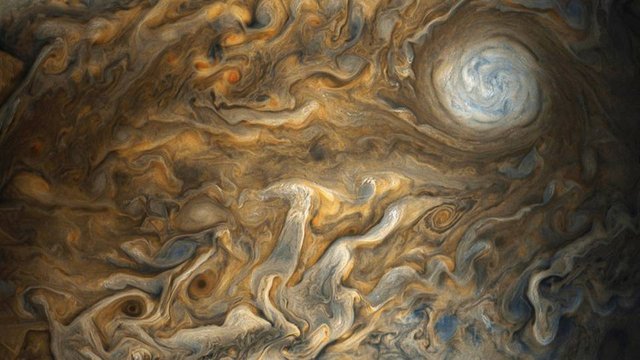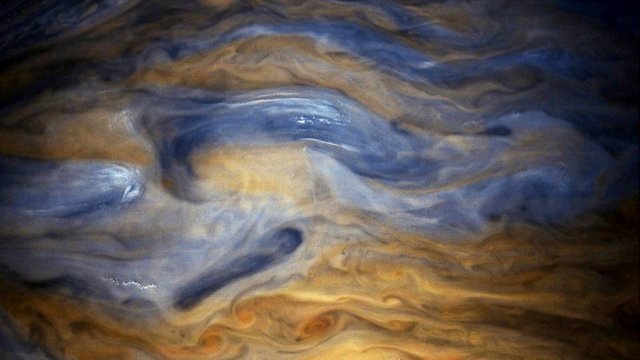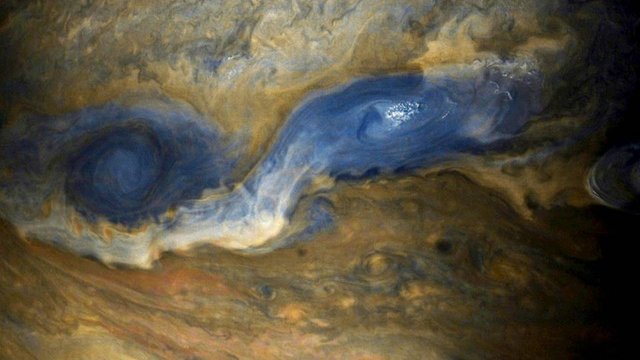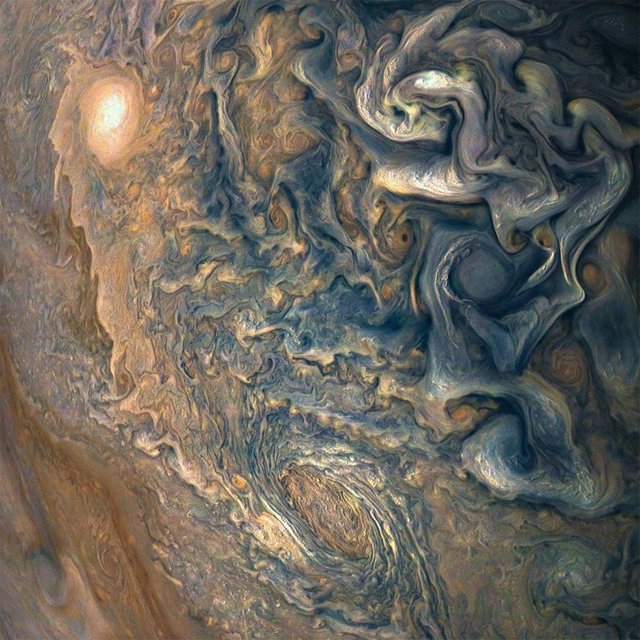NASA's Juno Spacecraft Sent Back Some Spectacular Shots Of Jupiter!!!

Juno's mission is to measure Jupiter's composition, gravity field, magnetic field, and polar magnetosphere. It will also search for clues about how the planet formed including whether it has a rocky core, the amount of water present within the deep atmosphere, mass distribution, and its deep winds, which can reach speeds up to 618 kilometers per hour

Juno's name comes from Greek and Roman mythology. The god Jupiter drew a veil of clouds around himself to hide his mischief, and his wife, the goddess Juno, was able to peer through the clouds and reveal Jupiter's true nature.

The spacecraft successfully entered Jupiter orbit on July 5 at 03:53 UTC

During the mission, the spacecraft will be exposed to high levels of radiation from Jupiter's magnetosphere, which may cause future failure of certain instruments and risk collision with Jupiter's moons.When Juno reaches the end of the mission, it will perform a controlled deorbit and disintegrate into Jupiter's atmosphere.
Despite only being on the job for about a year and a half, Juno’s primary mission is already reaching its final stretch. It took five years for the spacecraft to reach Jupiter, and the science phase of the mission is a mere two years long. However, NASA has already stated that it’s considering lengthening Juno’s mission, as the probe has been performing splendidly and shows no signs of dire mechanical issues that would hamper its usefulness.
Hi! I am a robot. I just upvoted you! I found similar content that readers might be interested in:
https://en.wikipedia.org/wiki/Juno_(spacecraft)